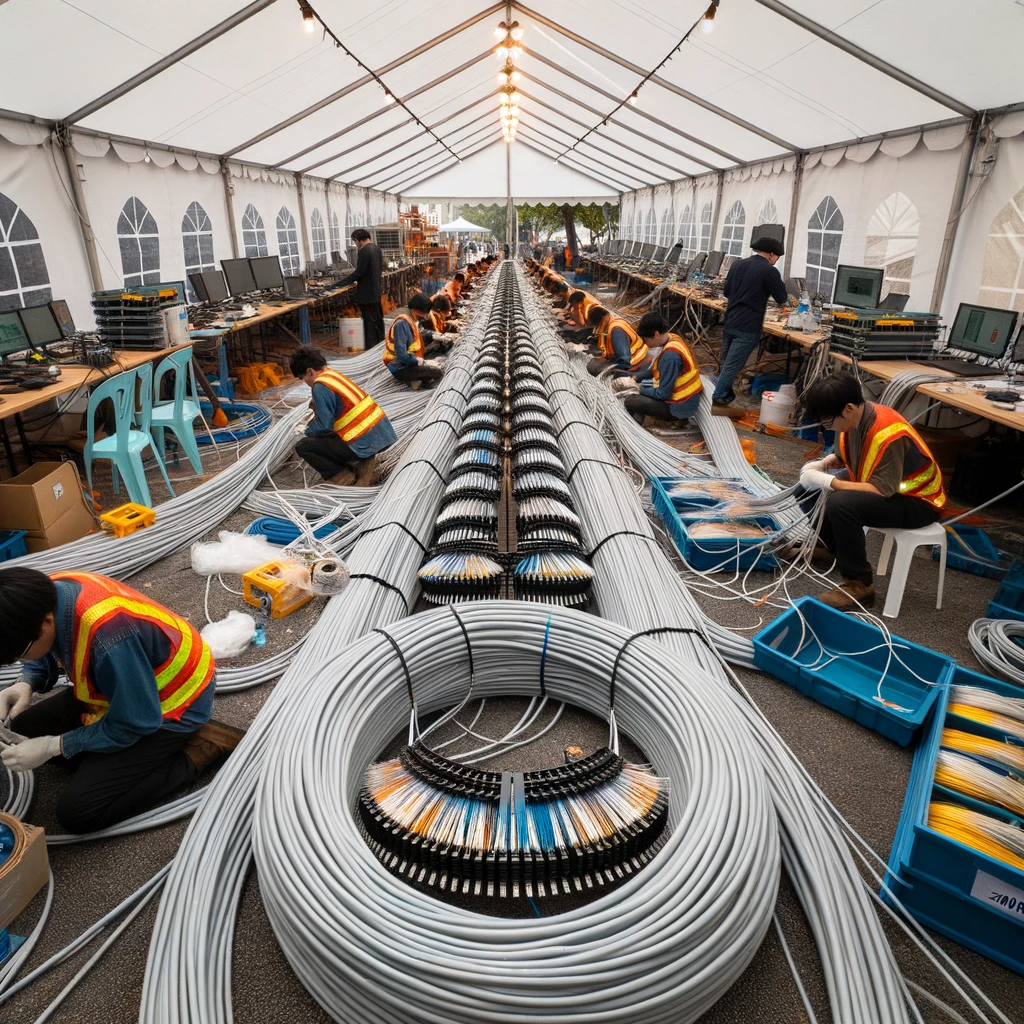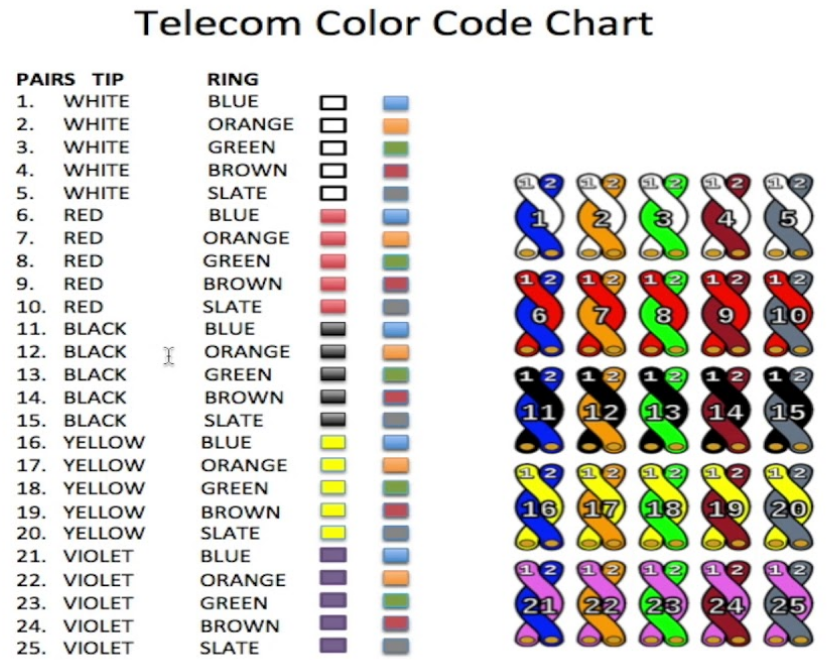

Telecom Wire Color Codes
Generate a color table for any number of pairs up to 2400
Click here to generate a cable pair color chartTelecom Wire Color Code Identification Tool: User Documentation
Overview
This tool is designed to assist telephone network technicians in identifying wire pairs within multi-pair telecom cables. It provides two main functionalities:
- Find Wire Colors by Pair Number
- Find Pair Number by Wire Colors
Concepts

Pair Number
The pair number uniquely identifies a wire pair within a multi-pair cable.
Basic Pair Colors
Tip Colors: White, Red, Black, Yellow, Violet
Ring Colors: Blue, Orange, Green, Brown, Slate
Binder Colors
Used to group multiple pairs into larger bundles. The binder colors are combinations of one of the secondary colors (Blue, Orange, Green, Brown, Slate) with one of the primary colors (White, Red, Black, Yellow, Violet), resulting in 25 different combinations like "Blue with White stripes," "Orange with Red stripes," etc.
Note there are only 24 binder colors. Violet/Slate is not used. So 24 binders x 25 pairs = 600 pairs
Super Binder Colors
Used to group multiple bundles of 600 pairs into even larger groups. Super binder colors are solid and based on the primary colors: White, Red, Black, Yellow, Violet.
Rules for Finding Wire Colors
- Basic Pairs: The first 25 pairs use a combination of 5 tip colors and 5 ring colors twisted together solid white/blue-white, solid white/orange-white, etc
- Binder Colors: Every group of 25 pairs is wrapped in a binder with one of 24 unique color combinations.
- Super Binders: Every group of 600 pairs is wrapped in a super binder with a unique color mylar tracer.
How to Use the Tool
Web Interface
Instructions for using the web interface are provided for both functionalities.
Limitations
The color-coding scheme supports up to 2400 unique pairs. For pair numbers above 2400, the color combinations will start to repeat.
Other Interesting Sites
Midi Synth Oscilloscope and Sound Wave Generator
Historical Information Resources
Learn the history of twisted pair wire
Site created by:Michael Scott McGinn